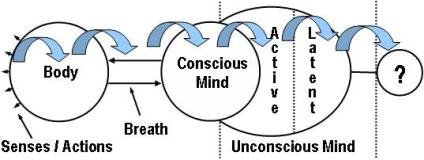Review of The Science of Yoga,
a book by William J. Broad
a book by William J. Broad
Review by Swami Jnaneshvara Bharati
There is a widespread misunderstanding of the nature of yoga that is well exemplified by William J. Broad in his book “The Science of Yoga”. Broad says in the Introduction that the book is about “postural yoga”, but he never again uses that term. Instead, he subsequently uses the single word “yoga”, implying that yoga and postures (postural yoga) are one and the same, which is the common cultural myth of our times. The degree to which he had done this was not immediately apparent to me; it took several readings to see the problem clearly.
Broad says that we are now in a period of yoga 2.0 and predicts that in the next two to three hundred years we will see the coming of yoga 3.0 and yoga 4.0. However, he says that his baseline period--yoga 1.0--is the medieval ages, completely ignoring the previous thousands of years of yoga history, which includes the yoga of the Vedas, Upanishads, Bhagavad Gita, and Yoga Sutras.
Broad says that the yoga of Patanjali (the Yoga Sutra) is “old yoga”, apparently in contrast to his views of “new yoga”. However, this new yoga bears no resemblance to the old yoga (using his term for clarity, not meaning that I agree with him). Broad also uses the phrase “modern yoga” a few times. If Broad’s categories align with today’s common view of yoga, then we can see that the current yoga is “not yoga” compared to the yoga of the ancient sages. There is almost nothing to be found of modern yoga, yoga 2.0, or not yoga in any of these ancient descriptions of yoga that would be part of old yoga.
We can get a clearer understanding of Broad’s book by mentally inserting the term “postural yoga” wherever he uses only the single word “yoga”. We can also mentally insert “not yoga” or “modern yoga” wherever he used only the single word “yoga”. These three exercises gives a very different feel to the book, making clear Broad’s disregard, if not disdain for the traditional meaning of yoga. In other words, Broad sees yoga only as a physical process dealing with fitness and health/medical treatments, and he writes from that perspective alone.
Once we see that Broad is talking only about the modern devolutions of yoga, it is easy to assess the quality and usefulness of his writing from within that limited scope. He has written an extremely clear and useful book about postural yoga or modern yoga or not yoga, as well as clearly summarizing the risks and benefits of those categories. However, although it is obviously not his intent, he has also done a great job of outlining the devolution of yoga in the past hundred years or so.
I encountered only one place where Broad uses the term “traditional yoga”, a term I and others have used to contrast the yoga of the sages from modern yoga. However, he uses the term traditional yoga not to refer to the yoga of the sages, but to postural hatha yoga before it was altered/hijacked by the innovators such as Krishnamacharya, Jois, and Iyengar.
I highly recommend this book. It gives great summaries of the potential dangers of modern postural yoga (not yoga), as well as physical fitness and health benefits, and if you read closely, also maps out the way in which yoga has been distorted in recent years. You may also notice that Broad offers no evidence or research whatsoever showing any danger in practicing the introspective methods of yoga as explained by the practitioners and teachers of old yoga (known simply as yoga). Apparently the dangers he presents only apply to not yoga, the modern distortions of yoga.
There was not a single example of anybody experiencing any health problems from sitting quietly doing the introspective practices of meditation and contemplation, which are characteristic of yoga done for its original purpose, Self-realization. It would be interesting to see research on the risks and rewards of these meditation and contemplation practices of old yoga, but this is not the subject of Broad’s book. That may be very difficult research since so few people are practicing or interested in this.



